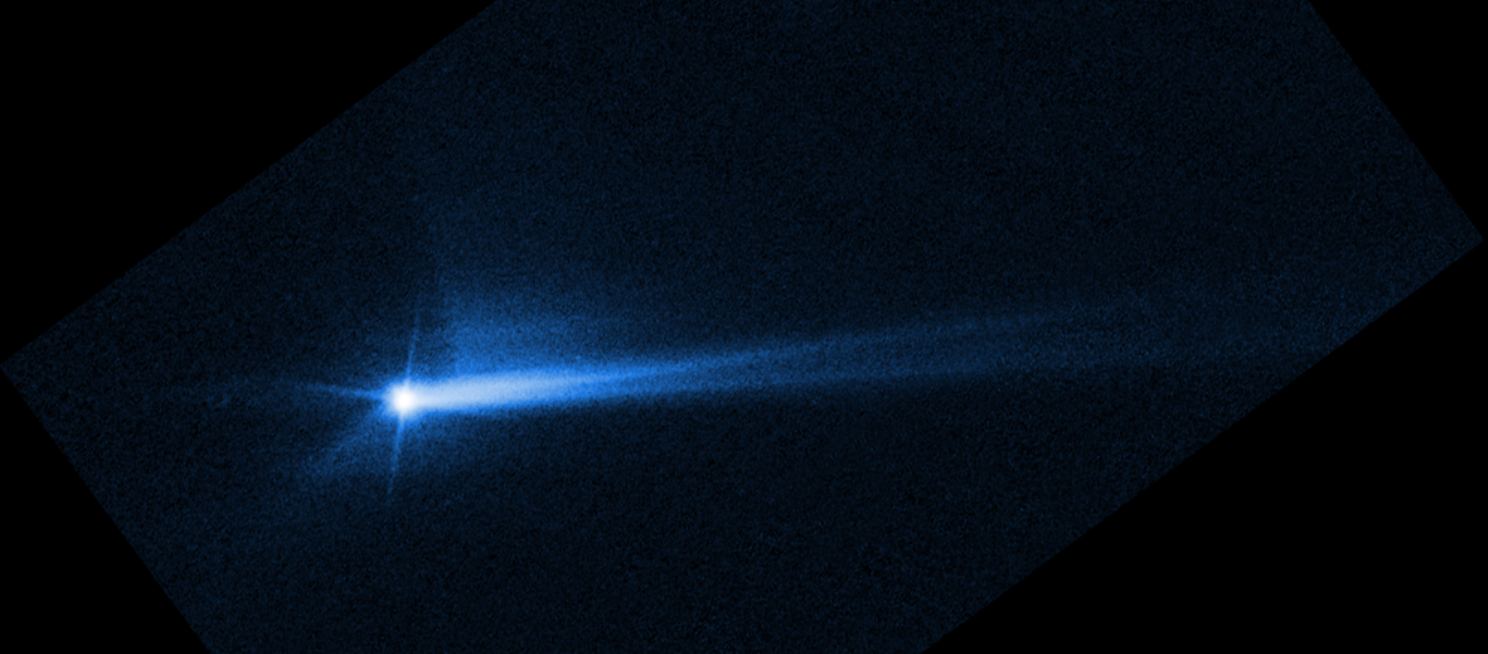NASA says its DART spacecraft caused a larger-than-expected change in the path of its target asteroid when they collided two weeks ago — marking a significant milestone in the effort to protect our planet from killer space rocks.
Ten months after it was launched, the Double Asteroid Redirection Test’s refrigerator-sized robotic probe crashed into a 560-foot-wide asteroid called Dimorphos on Sept. 26, as it circled a bigger asteroid known as Didymos. The paired asteroids were 7 million miles from Earth at the time, and posed no threat to Earth before or after the smashup.
Before the crash, DART’s science team said they expected the collision to reduce the time it took for Dimorphos to go around Didymos by about 10 minutes. NASA would have regarded any change in excess of 73 seconds as a success.
After the crash, detailed observations from ground-based observatories showed that the orbit was actually 32 minutes shorter — going from 11 hours and 55 minutes to 11 hours and 23 minutes. That’s three times as much of a change as scientists were expecting. Scientists also said Dimorphos appears to be slightly closer to Didymos.
“This is a watershed moment for planetary defense, and a watershed moment for humanity,” NASA Administrator Bill Nelson said today. “All of us have a responsibility to protect our home planet. After all, it’s the only one we have.”
The results suggest that an impactor spacecraft could change the path of a threatening near-Earth object enough to avoid a collision. However, scientists cautioned that further analysis will be needed.
“This result is one important step toward understanding the full effect of DART’s impact with its target asteroid,” Lori Glaze, director of NASA’s Planetary Science Division, said in a news release. “As new data come in each day, astronomers will be able to better assess whether, and how, a mission like DART could be used in the future to help protect Earth from a collision with an asteroid if we ever discover one headed our way.”
In the months ahead, astronomers will study imagery from an Italian-built piggyback probe called LICIACube to get a better sense of Dimorphos’ size and shape. Additional readings are also coming in from ground-based radio telescopes. And about four years from now, a European Space Agency mission known as Hera will follow up with close-range surveys of Dimorphos and Didymos.
Scientists said the effect of the DART impact might have been greater than expected because Dimorphos is basically a “rubble pile” in outer space, primarily consisting of loosely bound gravel and ice.
“You’re getting an enhanced deflection due to the amount of ejecta — that rocky material that’s being thrown off when the DART collision happened,” said Nancy Chabot, the DART coordination lead from the Johns Hopkins University Applied Physics Laboratory in Maryland.

An asteroid made of sterner stuff — for example, the iron-rich space rock that’s due to be studied up close by NASA’s Psyche mission in 2026 — might not have been deflected as much by an impactor of equivalent mass.
A successful asteroid deflection operation is likely to require more advance planning and coordination than the operations portrayed in movies like “Armageddon.”
Chabot noted that DART produced a 4% change in Dimorphos’ orbital parameters. “It just gave it a small nudge,” she said. “If you wanted to do this in the future … it could potentially work, but you’d want to do it years in advance. Warning time is really key here in order to enable this sort of asteroid deflection to potentially be used in the future, and it is part of a much larger planetary defense strategy.”
Dimorphos’ size puts it in a class of asteroids that are considered a high priority for detection and study, Chabot said — perhaps not big enough to cause a dinosaur-level mass extinction, but big enough to cause a regional catastrophe in the event of a collision. “It’s the first time we’ve been to an object of that size,” she said.
Glaze said that an infrared space telescope called Near-Earth Object Surveyor, due for launch in 2026, should help NASA identify and characterize potentially hazardous objects in Dimorphos’ size category — that is, more than 460 feet (140 meters) wide. Researchers supported by the B612 Foundation and the University of Washington are also developing software tools to accelerate the pace of asteroid detection.

